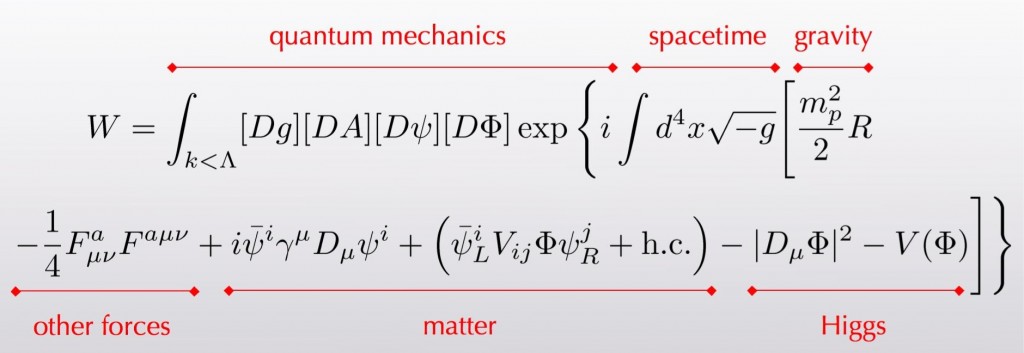I found 19 references to *quantum* in this article, 0 references to *cosmological constant*.
The article is so fringe that I had to stop being lazy and find the article discussion.
The low value of the vacuum energy density is not a principle problem, albeit many physicists still become apoplectic when facing the natural consequences of inflation. However, interestingly the entire eBOSS 20 year spectroscopic galaxy survey collaboratioon just published through peer review a short list containing at front and center the long noted eternal inflation multiverse solution of the same Nobel Laureate Stephen Weinberg that I cite in my own response to the article.
Nevertheless, the observed consistency with flat ΛCDM at the higher precision of this work points increasingly toward a pure cosmological constant solution, for example, as would be produced by a vacuum energy fine tuned to have a small value. This fine-tuning represents a theoretical difficulty without any agreed-upon resolution, and one that may not be resolvable through fundamental physics considerations alone [224,225]. This difficulty has been substantially sharpened by the observations presented here.
[
https://authors.library.caltech.edu/108974/1/PhysRevD.103.083533.pdf ; "[224] S. Weinberg, Rev. Mod. Phys. 61, 1 (1989)."]
The sophistic response is that it is still fringe. But that is an arguiable position now that hundreds of cosmologists in a major survey stuck their jaw out. I also recently discovered that its formal test has been suppressed by the common description of the history - in fact Weinberg hypothesized the low energy density range
before it was observed and you can find papers pointing that out.
Einstein GR and QM are in serious conflict here describing expanding space. Without the metrics from GR, there is no math describing the expansion of space, redshifts apparently, and cosmological distances using redshifts.
As my own response to the article show, that is a historical artefact, akin to how people still refer to quantum "duality" despite that quantum field theory explicitly solved that just after its proposal (particles being localized ripples in a wave functional field). I promote Donoghue's comment on that again:
The problem of quantum gravity is not what we once thought it was. If you go back to early references, you will find many statements saying that general relativity and quantum mechanics are incompatible, that the combination of general relativity and quantum field theory produces a meaningless theory. It is understandable that some of the pioneers may have thought in this way, as some of our quantum methods are awkward when dealing with general relativity. However, these statements are not correct.
Space is 3D flat with a relativistic Lorentzian metric factor regardless of gravity, and gravity is an added field in its quantum field theory, explicitly described in Wilczek's "core theory" based on Feynman path integrals:
[
https://www.preposterousuniverse.co...world-of-everyday-experience-in-one-equation/ ]
Adding relativity space expansion to its earlier time dilation and length contraction* doesn't seem like a big deal. This is perhaps more fringe, but it testably works and it has central players in quantum field theory promoting it. None of the other quantum gravity hypotheses are like that.
The last part of the comment skip over inflation, where that fact that causal disconnect of previously connected space volumes happened solves many problems. The apparent finetuning of the vacuum energy since the hot big bang has a natural - but for some infuriating - explanation. Or something else explains, but at least we have hypotheses.
Again, the natural eternal inflation would disempower the question what space is, since in that physics it has always existed and its energy density therefore sums to zero of an infinite time ground state. (Albeit frustrated, as our hot big bang shows, inflation lies at naturally somewhat higher potential energies.) It is consistent and it solves the general relativity problem of localizing energy on the cosmological scale - there is no net energy to localize - I'll give it that. But this time it is quite obviously fringe notions (though arguably promising, eternal inflation has solidified dueing the Planck collaboration era findings).
*Or as some now argues, its wavefunction collapse induction - need no change to quantum physics, just making the action quantum h universal akin to the universal speed limit c -putting all the exotic phenomena under the same hat. I believe I have commented on length here on that after I discovered the work on that, so see those comments for references.
Of those phenomena, time dilation is the least exotic since gravity mostly manifest due to the high value of the universal speed limit: your feet aging slower than your head is what mostly keeps your head up and feet down to Earth.



